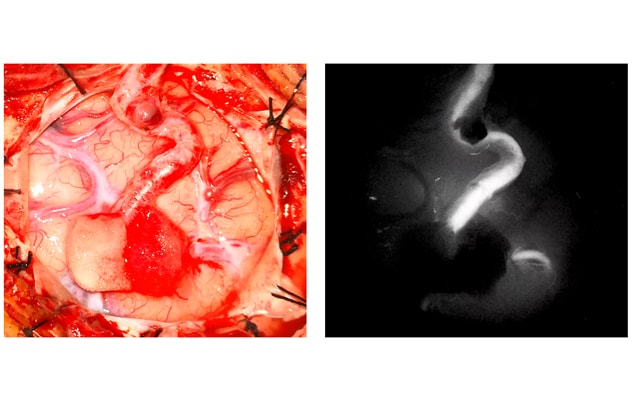Sept. 22, 2023
Mayo Clinic's multidisciplinary approach helps match individual patients with optimal treatment modalities for cerebrovascular pathologies.
"Multiple treatment modalities are available. Determining which is best for each individual is key to achieving the best outcomes," says Lorenzo Rinaldo, M.D., Ph.D., a neurosurgeon at Mayo Clinic in Rochester, Minnesota.
Cerebrovascular pathologies are often incidental discoveries. "The chances of these lesions causing morbidity is only 5% to 10%. But that morbidity is significant and potentially even life-threatening," Dr. Rinaldo says. "Some lesions are challenging to treat and have real risks associated with treatment. Choosing a treatment that poses risk, for a person who feels completely normal, is challenging."
At Mayo Clinic, a team of highly experienced specialists guides decision-making from preoperative work-up through surgery and postoperative care. "Our patients are managed not by a single surgeon but multiple people with expertise," Dr. Rinaldo says.
In addition to neurosurgeons, the treatment team includes neurologists, neuroradiologists and neurointerventionalists. These Mayo Clinic specialists have extensive experience with endovascular and radiation treatments as well as open surgery.
"Our goal is to provide comprehensive care for patients with the full range of cerebrovascular pathology — strokes, aneurysms, arteriovenous malformations and moyamoya disease," Dr. Rinaldo says. "We work together so that patients have care from not just one surgeon but multiple physicians with expertise."
 成功的旁路
成功的旁路
在左边,搭桥手术的术中图像显示了一条从头皮缝到大脑血管的血管。该手术的目的是增加流向大脑的血液流量,以预防卒中。在右侧,血管造影图像表明旁路正在工作。
Improving endovascular treatment of aneurysms
Mayo Clinic researchers are working to improve endovascular treatment of intracranial aneurysms. Although initial treatment is often successful, a subset of endovascularly treated aneurysms recur.
"They to tend to recanalize, and we don't understand exactly why," Dr. Rinaldo says. "Two intracranial aneurysms can be morphologically similar, and endovascular treatment of the two can have similar initial results — but one aneurysm recurs."
"We work together so that patients have care from not just one surgeon but multiple physicians with expertise."
Mayo Clinic's work focuses on understanding the biological processes leading to sustained aneurysm occlusion after endovascular treatment. These processes are investigated in devices deployed in animal models.
"Understanding how endovascular devices work at a molecular level can ultimately help us understand why endovascular devices aren't working in particular cases," Dr. Rinaldo says.
The work exemplifies Mayo Clinic's commitment to translational research. "What we learn in the laboratory will ultimately benefit patient care," Dr. Rinaldo says.
For more information
Refer a patient to Mayo Clinic.